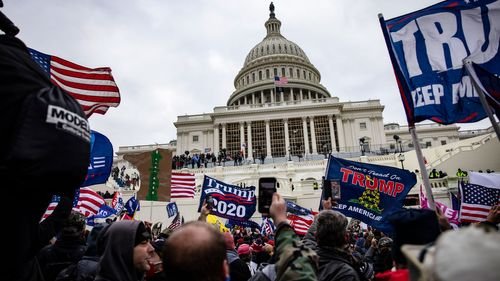

The Three Percenters flag was on display at the Capitol on Jan. While they claim not to discriminate against anyone, they declare that they were founded “in response to the election of Barack Obama.” Three Percenter groups are overwhelmingly white and they broadly oppose the Black Lives Matter (BLM) movement. Members insist that they exist to protect the Constitution and the country from government overreach.

That ideology rests on the myth that only 3 percent of the colonists fought for independence from Britain during the Revolutionary War. Two worrisome extremist groups illustrate the problem.įounded in 2008, the Three Percenters are a broad umbrella movement of paramilitary militia groups sharing a common ideology. Their embrace of patriotism created a problem for the military as these groups claimed to share the same values as America’s armed forces and sought to recruit retired and active duty personnel. To make matters worse, extremists wrapped themselves in the American flag. White supremacy and white power became “white pride” and “celebrating European heritage.” Finally, the fear inspired by the election of the nation’s first African American president, Barack Obama, caused an increase in the number of hate groups and their membership. They also reinvented themselves, replacing overtly racist terms with seemingly innocuous ones. The advent of social media enabled extremist groups to reach a much wider audience. The first two decades of the 21st century saw a revival of far-right extremism driven by a confluence of circumstances. They checked for tattoos “depicting, or symbolizing extremist philosophies, organizations, or activities,” which covered criminal groups and white supremacist organizations. Recruiters had to screen candidates, not only for physical and mental fitness, but for affiliation. During the 1980’s and 1990’s gang members enlisted with the express purpose of gaining tactical expertise they could use on American streets.
#EFFORTS ROOT OUT FARRIGHT EXTREMISM CRACKED#
Following the Oklahoma City bombing in 1995, law enforcement cracked down on extremism, leaving the militia movement in disarray but its ideology very much intact.Īs the military continued to address racism in the ranks, it faced a new extremist threat. They initially focused their anger on Vietnamese refugees on the Galveston Coast in Texas, but they also populated anti-government groups and the Posse Comitatus movement inspired by foreclosures during the farm crisis. In “ Bring the War Home,” Kathleen Belew demonstrates how disgruntled Vietnam veterans contributed to the growth of white power paramilitary groups in the 1980’s and 1990’s. Racism in the military spilled into civilian life. These marines could openly display their affiliation because a 1971 Department of Defense (DOD) directive had stated that membership in the KKK by active duty military members was not illegal unless those members overtly violated military regulations.

During an investigation into an incident at Camp Pendleton, Calif., in 1977, witnesses attested to harassment and assaults by members of the Ku Klux Klan and other white supremacist groups. The presence of white supremacists in uniform compounded the military’s problem with institutional racism. A 1971 report by the Congressional Black Caucus (CBC) documented systemic racism at U.S. During the late 1960’s, frustration over inequality and harassment erupted into violence that mirrored racial disturbances in the civilian world. Although it involves relatively few of those who serve, extremism, especially white supremacy, in the ranks of active duty and retired military has long been a problem.Īlthough President Harry Truman desegregated the armed forces in 1948, well ahead of the rest of American society, racial discrimination persisted. The arrests of current and retired military members who participated in the Capitol insurrection drew attention to the potential threat posed by extremists in uniform. Americans were likely shocked and dismayed by the need to vet National Guard troops securing the inauguration.


 0 kommentar(er)
0 kommentar(er)
